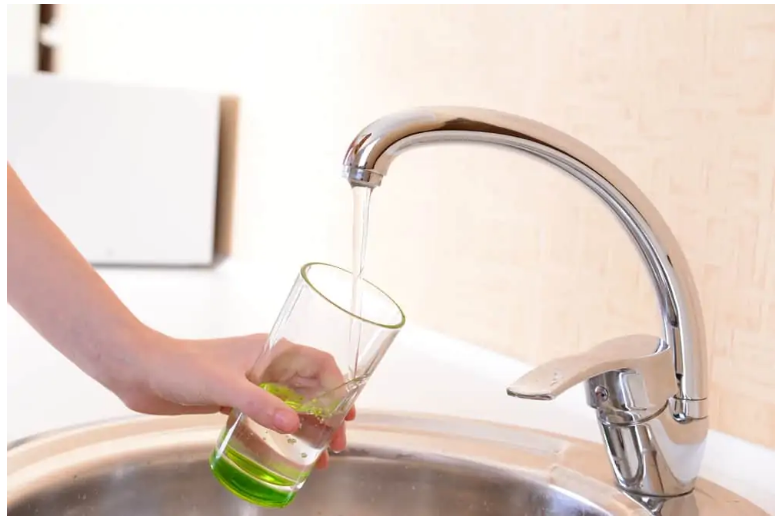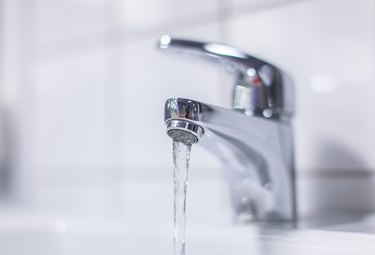Recommended Strategies for Resolving Low Water Pressure in Your Home
Recommended Strategies for Resolving Low Water Pressure in Your Home
Blog Article
This post underneath in relation to Low Water Pressure in the House? is exceedingly informative. Don't overlook it.

Low tide pressure in your home can be an aggravating issue, impacting every little thing from showering to cleaning dishes. If you're experiencing weak water circulation, there are a number of feasible causes and options to check out. In this overview, we'll discuss usual reasons for low water pressure and useful actions to address the concern successfully.
Introduction to Low Tide Stress
Low tide pressure happens when the circulation of water from your taps, showers, and various other fixtures is weaker than typical. This can make daily tasks more difficult and less reliable. Recognizing the root causes of low water stress is important to discovering the ideal option.
Typical Causes of Low Water Pressure
Pipe Obstructions
With time, pipes can end up being clogged with natural resource, debris, or particles, limiting the flow of water. This is an usual issue in older homes with galvanized steel pipes.
Corrosion
Deterioration within pipes can bring about leaks and lowered water pressure. Corrosion accumulation can restrict water circulation, specifically in maturing plumbing systems.
Faulty Stress Regulators
Pressure regulators are accountable for keeping regular water stress in your house. If they malfunction, it can lead to low water pressure or uneven flow throughout the house.
Metropolitan Water System Issues
Occasionally, the issue exists outside your home. Municipal water supply concerns, such as main line leaks or maintenance job, can temporarily lower water pressure in your area.
Just How to Diagnose Low Water Stress
Examining Faucets and Fixtures
Begin by testing the water pressure at various taps and fixtures throughout your home. If the concern is isolated to particular locations, it might indicate localized issues.
Evaluating Pipelines
Evaluate visible pipes for indications of leakages, deterioration, or blockages. Take note of any unusual sounds, such as banging or rattling pipelines, which can show issues within the plumbing system.
Consulting with a Plumber
If you're unable to determine the cause of low water pressure, consider employing an expert plumber to carry out a thorough evaluation. They can determine underlying concerns and suggest appropriate services.
Do It Yourself Solutions to Deal With Low Water Stress
Cleaning Aerators and Showerheads
Mineral deposits can collect in aerators and showerheads, lowering water flow. Eliminate and clean these elements frequently to enhance water stress.
Flushing Water Heater
Debris buildup in the water heater can restrict circulation and decrease efficiency. Flushing the storage tank occasionally aids eliminate sediment and maintain optimal efficiency.
Inspecting Pressure Regulator
Make certain that the stress regulator is functioning appropriately. Readjusting or replacing the regulator can aid restore proper water stress throughout your home.
Cleaning Clogs in Pipes
For small blockages, try making use of a plumbing snake or chemical drainpipe cleaner to clear obstructions in pipelines. Beware when using chemicals and adhere to security guidelines.
When to Call a Professional Plumber
If do it yourself efforts fall short to solve the problem or if you suspect substantial plumbing problems, it's ideal to seek help from a certified plumber. They have the proficiency and devices to deal with intricate issues securely and effectively.
Preventive Measures to Keep Water Pressure
Normal Maintenance
Arrange regular maintenance for your plumbing system to prevent problems such as corrosion, leaks, and obstructions. Dealing with small troubles early can help stay clear of even more substantial repair work later.
Mounting a Pressure Booster
Think about mounting a pressure booster pump to improve water stress in areas with regularly reduced circulation. This can be especially helpful for multi-story homes or residential or commercial properties with high-demand components.
Monitoring Water Usage
Bear in mind water use behaviors and avoid overtaxing the plumbing system. Basic adjustments, such as incredible showers and laundry loads, can aid keep ample water pressure.
Final thought
Dealing with low tide pressure can be discouraging, however recognizing the underlying reasons and implementing suitable options can recover optimum circulation throughout your home. Whether it's cleansing aerators, examining pipelines, or seeking advice from a plumber, taking aggressive steps can ensure a stable supply of water for your daily needs.
FOUR WAYS TO FIX LOW WATER PRESSURE NOW
Turning on a shower or faucet only to find the water comes out in a sad, slow drizzle is never a good feeling. How exactly are you supposed to wash a pan or take a quick shower when it takes 10 minutes just to rinse off a little soap? The good news is that when your water pressure is bad, there's always a cause: typically one that can be easily fixed. Here are some of the most common causes of low pressure and what you can do to fix the issue:
DEBRIS AND MINERAL DEPOSIT BUILDUPS
If you notice low water pressure from just one or two of the fixtures in your house, the problem likely has to do with debris buildup. Water is full of minerals and other debris, all of which can accumulate in your pipes and on your fixtures. This can cause a blockage that affects how much water flows through. To fix this, try filling a small plastic bag with white vinegar, and use a rubber band to hang it around your showerhead or faucet. Let the head of the fixture soak for a few hours, and the vinegar should loosen the deposits.
WATER LEAKS
Leaks are another common cause of low water pressure. If water is flowing out of your plumbing through a hole or crack before it can reach your fixture, the pressure coming out of the faucet or showerhead will be lower. A plumbing professional is your best bet for finding and repairing a leak in your water supply pipes.
Leaks are another common cause of low water pressure. If water is flowing out of your plumbing through a hole or crack before it can reach your fixture, the pressure coming out of the faucet or showerhead will be lower. A plumbing professional is your best bet for finding and repairing a leak in your water supply pipes.
FOUR WAYS TO FIX LOW WATER PRESSURE NOW
Turning on a shower or faucet only to find the water comes out in a sad, slow drizzle is never a good feeling. How exactly are you supposed to wash a pan or take a quick shower when it takes 10 minutes just to rinse off a little soap? The good news is that when your water pressure is bad, there's always a cause: typically one that can be easily fixed. Here are some of the most common causes of low pressure and what you can do to fix the issue:
DEBRIS AND MINERAL DEPOSIT BUILDUPS
If you notice low water pressure from just one or two of the fixtures in your house, the problem likely has to do with debris buildup. Water is full of minerals and other debris, all of which can accumulate in your pipes and on your fixtures. This can cause a blockage that affects how much water flows through. To fix this, try filling a small plastic bag with white vinegar, and use a rubber band to hang it around your showerhead or faucet. Let the head of the fixture soak for a few hours, and the vinegar should loosen the deposits.
WATER LEAKS
Leaks are another common cause of low water pressure. If water is flowing out of your plumbing through a hole or crack before it can reach your fixture, the pressure coming out of the faucet or showerhead will be lower. A plumbing professional is your best bet for finding and repairing a leak in your water supply pipes.
Leaks are another common cause of low water pressure. If water is flowing out of your plumbing through a hole or crack before it can reach your fixture, the pressure coming out of the faucet or showerhead will be lower. A plumbing professional is your best bet for finding and repairing a leak in your water supply pipes.
A VALVE ISSUE
If you have low water pressure throughout your home, check your main shut-off valve to make sure it's completely open. You may also want to see if there's a pressure-reducing valve installed. If there is, have a plumber help you adjust the settings to get the pressure you're looking for.
OTHERS USING WATER
Believe it or not, your low water pressure could be caused by your neighbors. If you notice low pressure at certain times of day, it may be because you and the people living next to you have similar schedules - when everyone is showering at the same time, the pressure will be lower in every home. Low pressure throughout the neighborhood may also be caused by an issue with your municipal water supply. If that's the case, call the supplier to see if they're working on the issue.
https://www.rotorooter.com/blog/water-leaking/low-water-pressure-fixes/

I have been very serious about Dealing with Low Water Pressure in Your Home and I'm hoping you enjoyed reading the new article. Are you aware of somebody else who is occupied with Low Water Pressure in the House?? Do not hesitate to promote it. Kudos for your time. Kindly stop by our website back soon.
At This Website Report this page